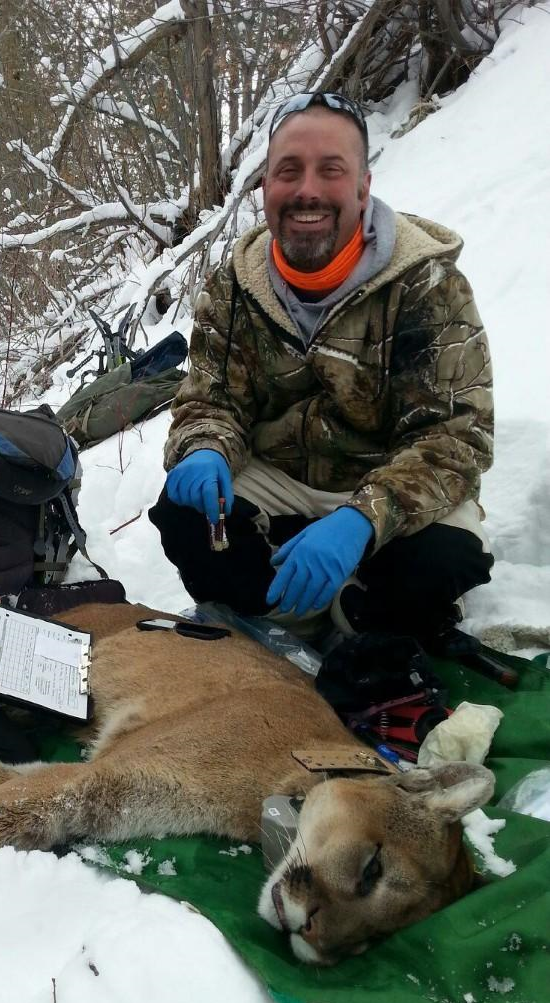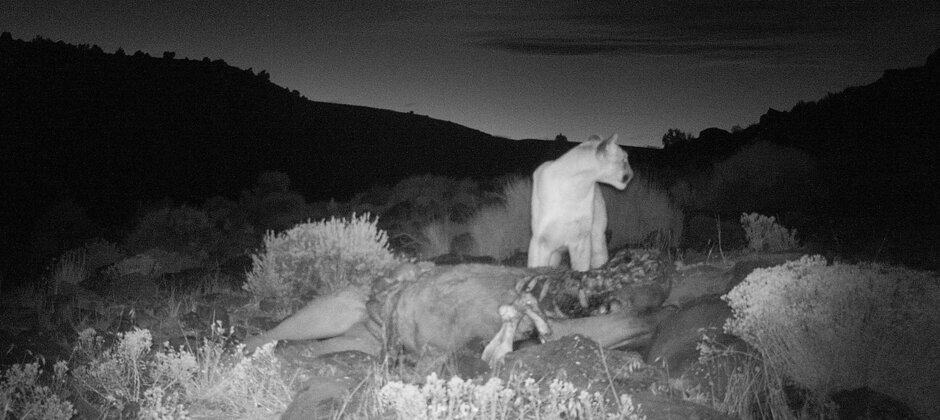Share this article
JWM: Cougars prey on feral horses in the Great Basin
GPS tracking collars on cougars have revealed that the predators extensively prey on the burgeoning feral horse populations in the Great Basin.
“We found that both male and female [cougars] were taking horses, up to adult size horses,” said Jon Beckmann, a wildlife supervisor at the Kansas Department of Wildlife and Parks.
Beckmann and Alyson Andreasen, a PhD student from the University of Nevada, Reno at the time, had heard anecdotal stories of cougars (Puma concolor) eating feral horses (Equus ferus) on the landscape. But researchers hadn’t studied cougar ecology in the Great Basin in Nevada since the 1970s, and scientists didn’t know if the big cats were actively hunting horses or just scavenging on dead animals encountered on the landscape.
In a study published recently in the Journal of Wildlife Management, lead author Andreasen, Beckmann and their colleagues fitted 21 cougars with GPS tracking collars from 2009 to 2012. Thirteen of these cats were in the Great Basin, while the remaining eight, which were used as a control in their study, were in the Sierra Nevada mountain range in the western part of Nevada.

Jon Beckmann collars a cougar in Nevada. Credit: Jon Beckmann
The team used previously published algorithms to determine likely kill sites from GPS clusters and came up with 1,310 potential kill sites. Beckmann, who was at the University of Nevada, Reno and the Wildlife Conservation Society at the time, and his colleagues visited each of these sites.
Their analysis showed that cougars in the Sierra Nevada mostly preyed on mule deer (Odocoileus hemionus), as expected—91% of the kill sites were deer.
“Most of the time, cougars are kind of considered a specialist on mule deer,” Beckmann said.
But the cats in the Great Basin showed a vastly different type of specialization. Only 29% of the 770 possible kill sites in the Great Basin were mule deer.
The majority of kill sites in the Great Basin—60%—were feral horses. Ten of the 13 cats they tracked in this area were predominantly taking down horses.
Beckmann said the researchers were also surprised to find that both females and males were going after horses—the former more than the latter, in fact.
Males tended to prey on horses more in foaling season in spring and early summer. By late summer and through the winter, the males had switched their preferred meals to mule deer. While males also preyed on foals, females, on the other hand, preyed on horses all year long. The researchers aren’t sure why—large prey can be dangerous.
“It’s a risky prey item. We’ve seen over the years some cougars that are pretty beat up—you can tell the horse eaters,” Beckmann said. “It’s a rough life trying to take down 800-1,000 pound animals consistently.”
He speculates that the females may go after bigger prey items like horses to feed kittens.
“The reward may outweigh the risk,” Beckmann said.
The discovery may seem like an ecological win regarding a potential natural control of horses, which can outcompete native species and damage native ecosystems. But the cougars don’t prey on enough horses to result in a large drop in the equid population.
“Our data suggests that cougars are effective predators of horses,” Beckmann said. But, “it’s probably not going to be that panacea where cougars are out there limiting horse populations.”
He notes that the ecology of the Great Basin has gone through a lot of flux over the past century or so. Black bears (Ursus americanus) were extirpated from the area by the 1930s, but have been returning to the area in the last 25 years or so. Bears sometimes scare cougars off of horse carcasses, but don’t seem to prey on the equids directly.
“It’ll be interesting to see how all these dynamics play out as the Great Basin continues to change,” Beckmann said.
This article features research that was published in a TWS peer-reviewed journal. Individual online access to all TWS journal articles is a benefit of membership. Join TWS now to read the latest in wildlife research.
Click here to see TWS’ statement on feral horses and burros in North America.
Header Image: A cougar on top of a feral horse it killed in the Great Basin. Credit: Alyson Andreasen








